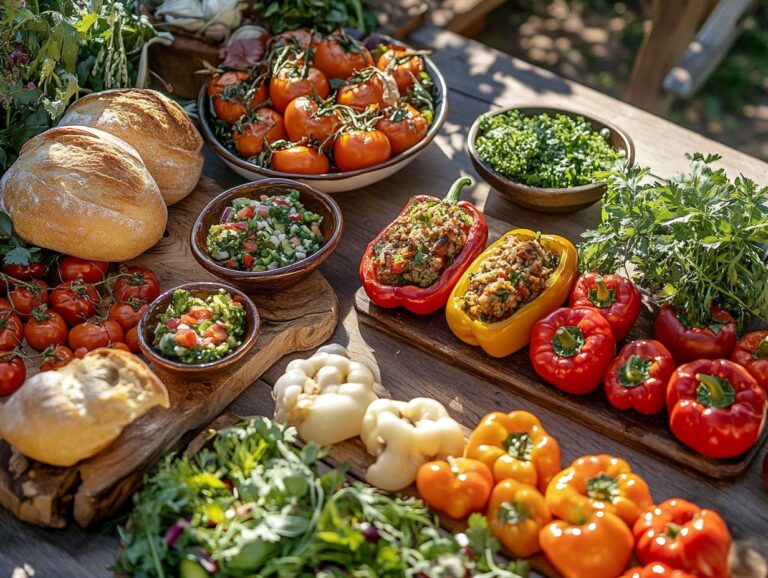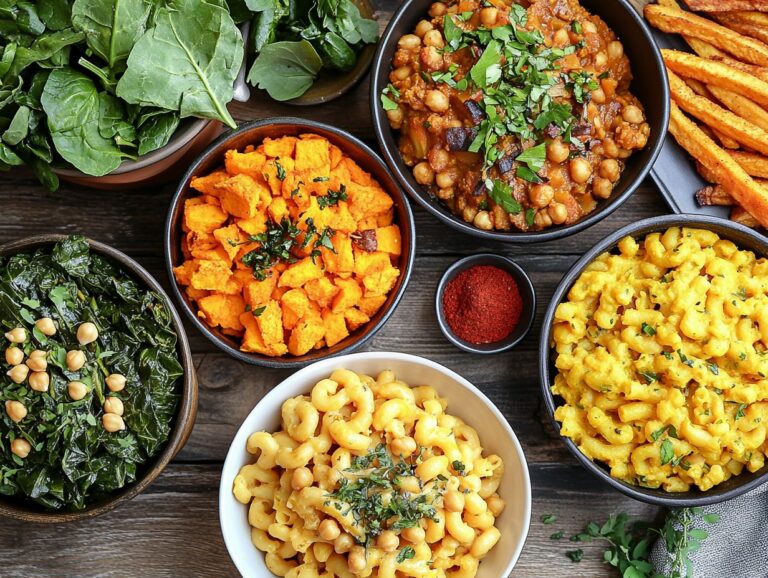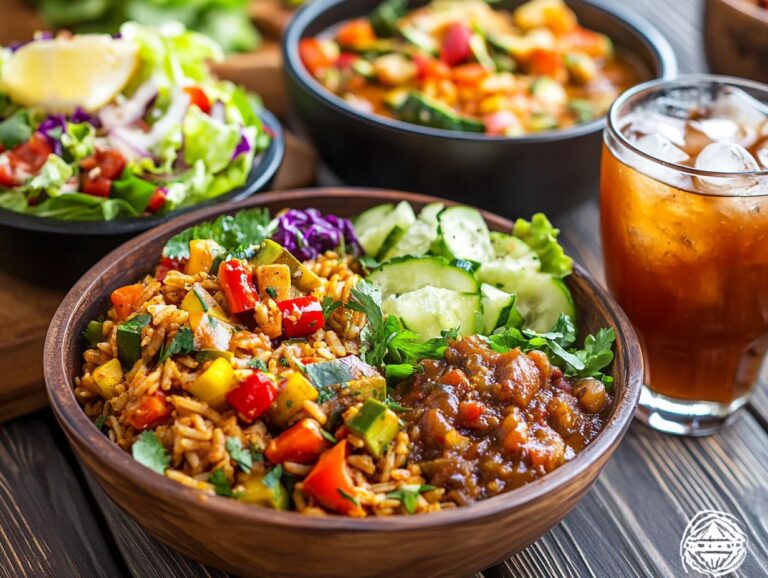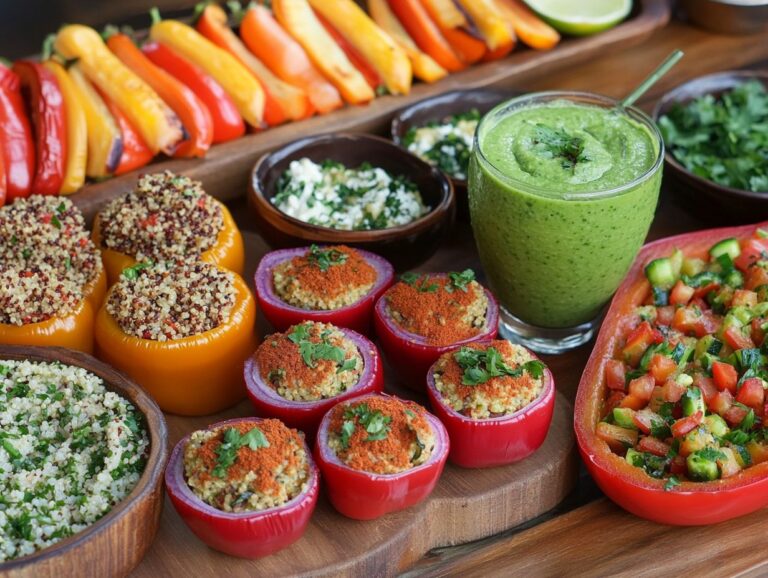Baking bread at home can be a rewarding and delicious experience, especially when you explore vegan recipes. This guide highlights the benefits of making your own bread, from the joy of creating unique flavors to the health advantages of using fresh ingredients. It covers the essential ingredients needed for vegan bread, provides a foolproof recipe for a bread machine, and suggests creative variations to keep the process exciting. Additionally, it addresses common baking challenges and offers tips on how to utilize your bread machine for other vegan dishes. Prepare to savor the delightful aroma of freshly baked bread right from your own kitchen!
Benefits of Making Bread at Home
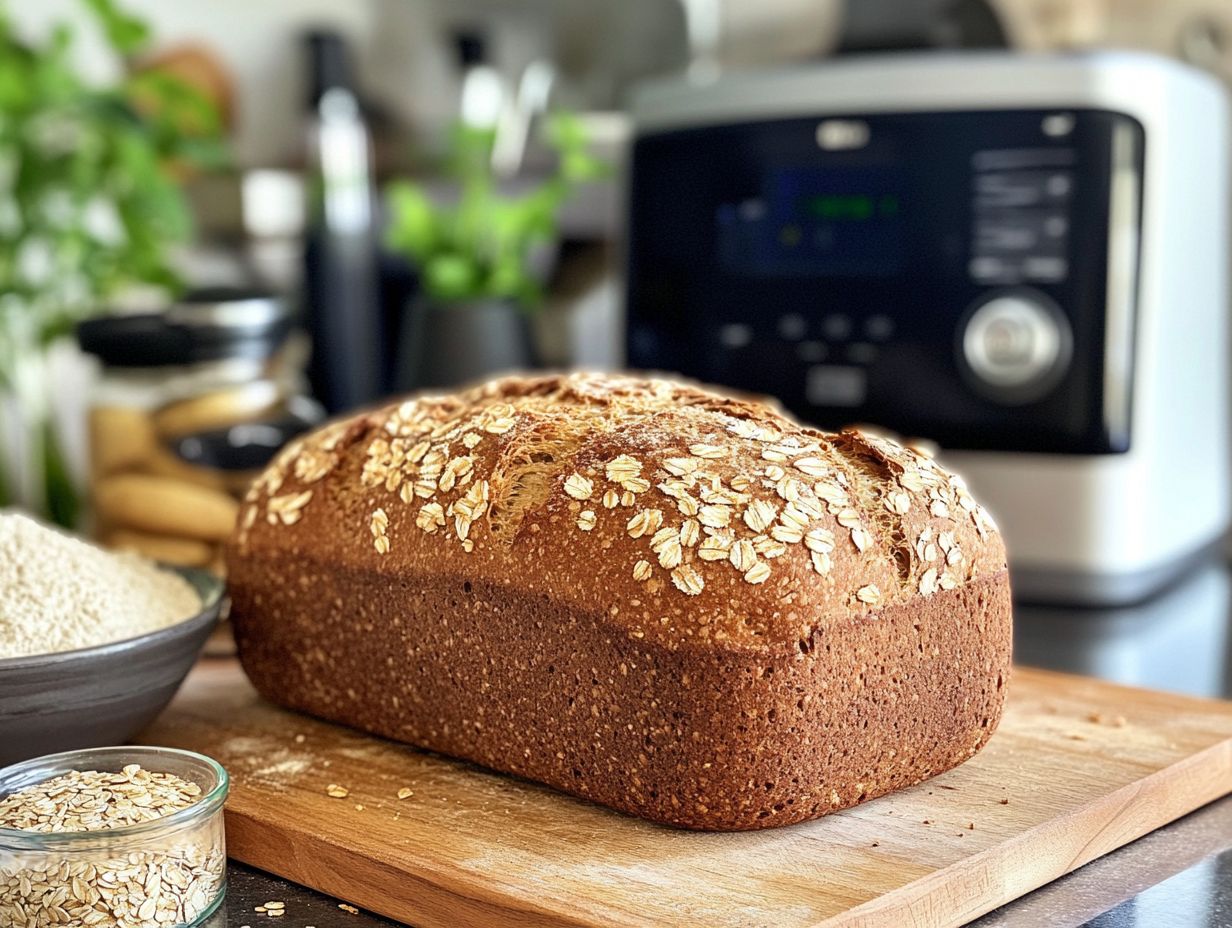
Making bread at home offers numerous benefits, particularly for vegans and those seeking healthier alternatives to store-bought options. When you bake bread at home, you have complete control over the ingredients, allowing you to incorporate whole grains, seeds, nuts, and other nutritious components.
The act of making and baking bread can become a mindful practice, enhancing the emotional rewards associated with bread consumption. The joy of sharing warm slices of homemade bread with friends and family adds to these emotional benefits, creating a unique sense of connection.
Homemade bread is generally healthier than store-bought varieties, as you can select natural sweeteners and minimize additives. Each loaf you create is inherently healthier. Store-bought bread often contains preservatives that homemade bread does not, making your creation a wholesome alternative.
The process of making bread encourages mindfulness and patience, allowing you to savor each moment. Kneading the dough is not only a physical activity that fosters a sense of accomplishment but can also be a therapeutic experience.
The delightful aroma of baking bread serves as a natural mood booster; few scents are as comforting as that of fresh bread rising in the oven. This warmth and fragrance can instantly transform a house, fostering a spirit of togetherness.
Additionally, homemade bread carries cultural significance, often providing a sense of security and belonging when shared with others, which contributes positively to emotional well-being.
Essential Ingredients for Vegan Bread
The essential ingredients for vegan bread include flour, water, yeast, and salt, which together create the basic structure of the dough. To enhance textures and flavors, sugar, seeds, and other ingredients may be added. For individuals with dietary restrictions, gluten-free options are also available.
While fruits and vegetables are not typically used as base ingredients in bread, they can serve as optional additions. Common ingredients include:
- Onions
- Garlic
- Carrots
- Bananas (for sweeter varieties)
Starchy vegetables like potatoes or pumpkin can also be incorporated as either base ingredients or additions.
In vegan bread recipes, cashew, almond, or coconut milks can substitute for cow’s milk. Additionally, egg substitutes such as flax eggs or applesauce can replace eggs, while nutritional yeast can provide a cheese-like flavor or be sprinkled on top.
Finally, for those wishing to replicate the tang of buttermilk, a vegan version can be made by combining dairy-free milk with a dash of vinegar.
Key Ingredients and Substitutions
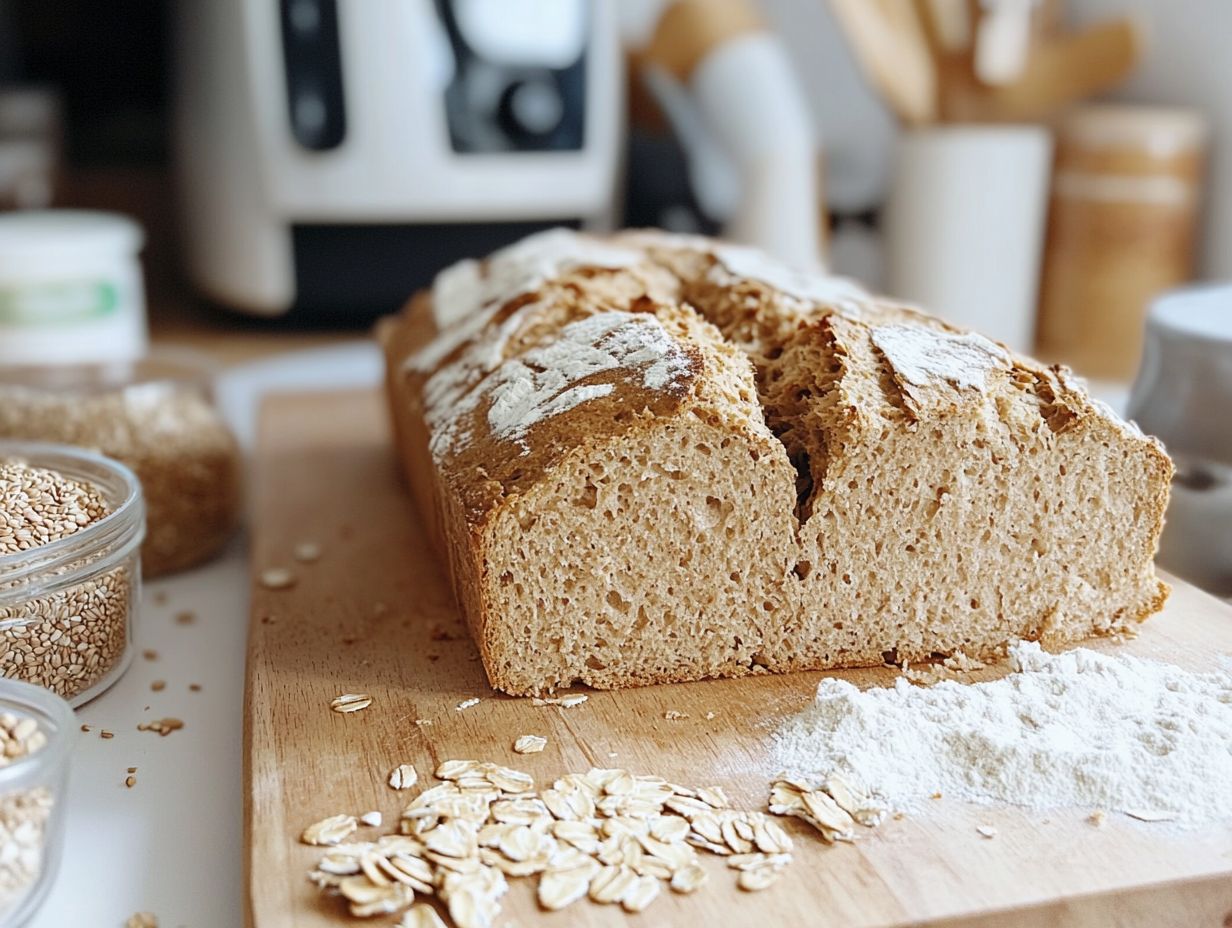
Key ingredients in vegan bread can often be substituted to accommodate personal taste and dietary restrictions, allowing bakers to experiment with different flavors and textures. These substitutions not only enhance the versatility of the bread but also encourage creativity.
For example, while traditional wheat flour provides a strong structure, alternatives like almond flour and coconut flour can introduce unique flavors and a richer nutritional profile. Almond flour, which is rich in healthy fats and proteins, promotes a moist texture, whereas coconut flour is highly absorbent and requires additional liquid to prevent dryness.
Additionally, nutritional yeast can be added as a seasoning to impart a cheesy flavor while contributing B vitamins, making it an excellent choice for those seeking enhanced nutrition in their diet.
To replace traditional sugar, bakers can explore options like maple syrup or agave nectar, which not only sweeten the bread but also add depth of flavor. By understanding these substitutes and their effects on the final product, bakers can confidently create a variety of delicious vegan bread that aligns with their dietary preferences.
Basic Vegan Bread Machine Recipe
A basic vegan bread machine recipe is perfect for anyone looking to quickly and easily make homemade bread while consistently achieving great results.
Since a bread machine automates the process, including essential steps like kneading and baking, you can easily adjust the settings to create your preferred recipe in any size you desire.
The baking time and settings can be modified to experiment with various flavors and textures, resulting in a delicious and fresh loaf every time.
Step-by-Step Instructions
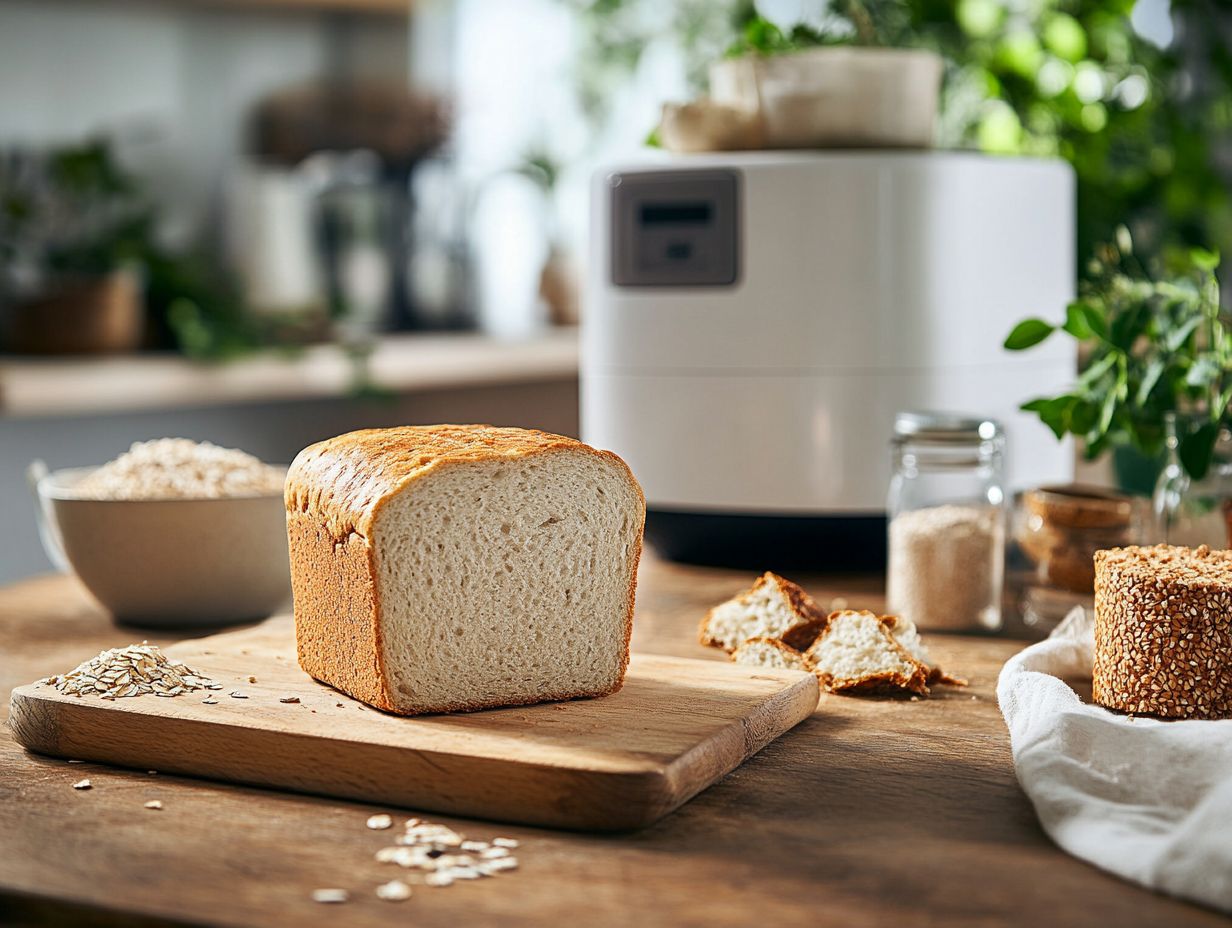
You can easily make vegan bread using a bread machine by following step-by-step instructions to achieve the right consistency and flavor, creating homemade bread delicious enough to serve at dinner parties with family or friends.
First, measure all of your ingredients precisely, including water, flour, salt, and yeast, to create a balanced dough. Select the appropriate baking cycle based on your machine’s settings, taking into consideration your texture and crust preferences before mixing the dough.
Ingredient Order: Add the ingredients to the machine in the order recommended by the manufacturer, typically starting with the wet ingredients followed by the dry ones. This order allows the yeast to activate properly.
Dough Consistency: During the initial mixing of the dough, monitor its consistency. The dough should be slightly tacky but not sticky. If it feels sticky, gradually add small amounts of flour or water until it reaches the desired texture.
Kneading: Allow the machine to continue through the kneading phase after the initial mixing. Ensure that the dough is kneaded adequately to develop gluten, which is essential for achieving the proper final texture and consistency.
First Rise: After the first rise, check the volume of the dough; it should have doubled in size, indicating that it is ready for the next step before baking.
Variations on Vegan Bread Recipes
Variations of vegan bread recipes encompass a variety of types, including artisan bread, quick bread, flatbread, savory bread, sweet bread, and bread alternatives.
Artisan Bread: There are numerous variations of vegan artisan bread recipes. For example, the basic bread recipe can be adapted to create a wide array of textures and flavors. By changing the type of flour—such as using whole wheat, rye, or spelt flour—incorporating seeds, or adding different spices, bakers can craft endless versions of this vegan bread. Artisan bread can also be enhanced with various toppings. Unique options include sourdough bread and focaccia, both of which can be made vegan. Furthermore, artisan breads can take on various forms from around the world, such as baguettes, ciabatta, or naan.
Quick Bread: Quick breads are celebrated for their simplicity, as they do not require yeast to rise. Many quick breads can be made vegan by utilizing non-dairy milk and other plant-based ingredients. These breads often feature fruits or vegetables as their main components. For instance, banana bread uses mashed bananas, while zucchini bread incorporates shredded zucchini. These ingredients not only add moisture but also contribute distinctive flavors. Quick breads are typically moist, dense, and cake-like in texture, and they are often baked in a loaf pan for easier slicing.
Flatbread: Flatbreads, such as pita and tortillas, can be easily adapted to be vegan. These breads are created by mixing flour with water and salt, then rolling the dough into thin, flat rounds. Flatbreads are frequently enjoyed with dips, spreads, or used as wraps for various fillings.
Savory Bread: Savory vegan breads, like pizza dough, are perfect for family gatherings and parties. There are countless variations of pizza dough and calzones. While most pizza dough recipes are inherently vegan, it is wise to double-check the ingredients to avoid any additions like honey or dairy, particularly if ordering from a restaurant.
Sweet Bread: Many sweet bread recipes that are made vegan often fall under the category of quick breads. These breads typically include sugar, nut butter, fruit preserves, or flavorings like cinnamon or chocolate. Traditional examples include hot cross buns, challah, babka, and panettone, but many cultures around the world have their own versions of sweet breads.
Bread Alternatives: Some recipes may not be classified as traditional bread but serve similar purposes or can be made with bread. Examples include croutons for soups and salads, stuffing used to fill poultry before baking, or bread crumbs. These recipes are generally easy to prepare using leftover bread that might otherwise go to waste.
Sweet and Savory Options

Vegan bread recipes offer a delightful array of sweet and savory options, creating an exciting culinary journey that caters to diverse tastes and dining occasions.
For instance, classic sweet breads such as:
- banana bread
- zucchini bread
- lemon bread
serve as delicious, nutritious, and healthy snacks or breakfast choices, perfect for those with dietary preferences and food allergies. Meanwhile, savory artisan breads can be enhanced with herbs, spices, and cheese alternatives, making them satisfying accompaniments to meals, offering a variety of serving suggestions. By experimenting with various flavor combinations, bakers of all experience levels can uncover new favorites, share their discoveries within the baking community, and explore recipe variations.
For a deeper exploration, consider a delectable carrot cake quick bread made with grated carrots, warm spices like cinnamon and nutmeg, and a sprinkle of walnuts for added crunch, providing a delightful texture contrast. The ingredient list is simple, featuring whole grain flour, plant-based yogurt, and maple syrup.
On the savory side, a garlic and rosemary focaccia, using artisan techniques, makes a delightful addition to any dinner. This recipe requires only flour, yeast, water, and olive oil to bring its comforting, aromatic flavors to life, ensuring a golden crust and satisfying crumb structure. Enhancing the bread with toppings like olives or sun-dried tomatoes can elevate the experience, transforming basic recipes into gourmet delights and offering unique flavor profiles.
Troubleshooting Common Issues
Troubleshooting common issues like inconsistent quality, texture, and size is essential for ensuring that homemade bread, including sourdough and quick bread, meets the highest standards for texture and crust. By understanding and addressing the factors that contribute to problems such as sticky or dry bread dough, or bread that turns out too dense, over-proofed, or under-proofed, you can achieve the consistently high quality and flavor you desire.
The following troubleshooting tips will help you identify and resolve many common problems that may occur during the bread-making process at home, enhancing your home cooking experience.
Tips for Perfect Bread Every Time
Here are the best practices for making bread:
- Use high-quality flour. The protein content of the flour you choose will affect the texture of the bread, while the amount of water the dough can absorb (hydration) influences how well it rises and bakes, contributing to the overall crumb structure.
- Knead the dough properly. Kneading is essential for developing the gluten structure that holds air bubbles during fermentation, giving the bread its texture and flavor, ensuring a delicious loaf. This process enhances both the taste and texture of the final product.
- Ensure ideal yeast and fermentation. Yeast is crucial for producing the carbon dioxide that causes the dough to rise. During fermentation, the dough develops a distinct aroma. Fermentation can take anywhere from 2 hours to 2 days, depending on the recipe; many bakers believe that longer fermentation results in tastier bread with better texture and flavor profiles.
- Create the right baking environment. Temperature is critical for successful baking, especially when using a bread machine. Use an oven thermometer to ensure the precise temperature needed for baking, which helps guarantee that both the top and bottom of the loaf bake evenly and thoroughly. Additionally, humidity in the kitchen can impact the dough, affecting its rising time and final texture. If the air is too dry, the dough may not rise properly; conversely, excessive humidity can cause it to rise too much, impacting the final loaf’s quality. An ideal humidity range of 65% to 70% and a temperature of 75°F (24°C) are recommended for optimal baking conditions.
- Avoid rushing the process, as proper rising time and preparation methods are crucial. Hastening any steps in the baking process will compromise the quality of the bread. Take the time needed to knead, proof, and bake the dough in order to achieve the best results.
Using Your Bread Machine for Other Vegan Recipes
You can create a variety of vegan recipes beyond just bread using a bread machine, exploring easy recipes and vegan substitutes. Making meals with this appliance has never been easier.
Pizza Dough: Pizza dough is an excellent choice for the bread machine. By using the dough setting, you can prepare your pizza dough in the machine and then bake it in the oven or on the stove, ensuring perfect texture and flavor. Typically, pizza dough is made with flour, water, yeast, and oil.
Fruit Chips: Another great idea is to make fruit chips using fruits like apples, bananas, or pears, offering a healthy and family-friendly snack option. It’s important to remove the skins, as they are generally not edible. You can thinly slice the fruits and place them in the bread machine, utilizing kitchen gadgets for convenience.
Flour Alternatives: You can also experiment by replacing some or all of the flour in your recipes with gluten-free alternatives such as semolina, corn, or rice flour. The dough setting allows you to incorporate nuts, dried fruits, and seeds, creating delicious snacks with diverse texture contrast.
Vegan Fried Rice: To make a great vegan fried rice, the key is to prepare a batter that is thick enough to coat your fingers without clogging the nozzle, ensuring the right consistency. You can enhance the dish by adding vegetables such as mushrooms, broccoli, and carrots.
The bread machine not only mixes the batter but also saves you time, making it a convenient option for a variety of recipes, supporting meal prep and food storage.
Creative Ideas for Homemade Meals
Getting creative with your bread machine can yield meals that incorporate homemade products with a wide range of flavors and uses, embracing simplicity and sustainability. By experimenting with new flavor combinations, such as adding herbs or spices to the dough, you can create aromatic loaves that enhance any meal and reflect your culinary lifestyle choices.
For example, you might make warm garlic herb focaccia to accompany a hearty vegan stew or sweet cinnamon raisin bread to enjoy as a breakfast or snack, exploring different bread types and cooking methods. This inventiveness encourages creativity in the kitchen, which often flourishes through the process of baking bread at home, inspired by online resources and recipe collections.
One of the joys of using a bread machine is that you can always pull out a fresh loaf, ready to eat, perfect for meal planning and family meals. Sharing your baking successes with the community can inspire others to explore their own creativity in the kitchen, fostering community sharing and culinary tips exchange.

